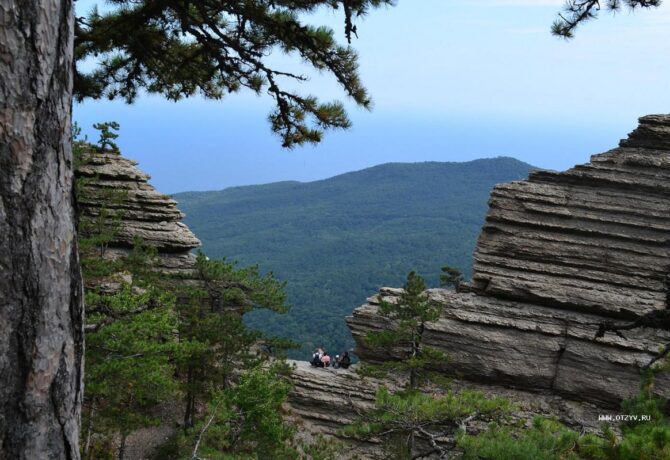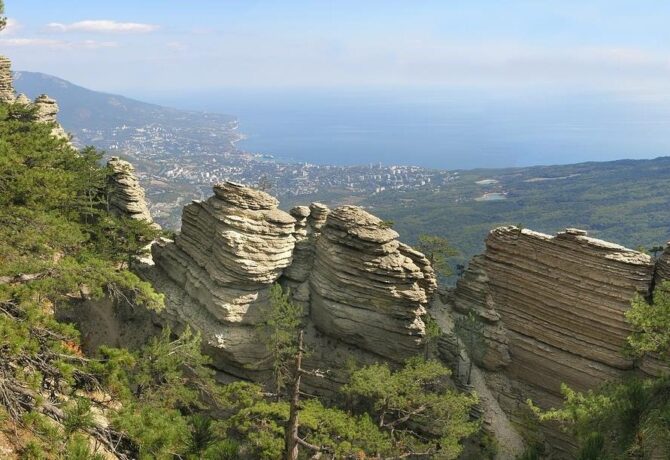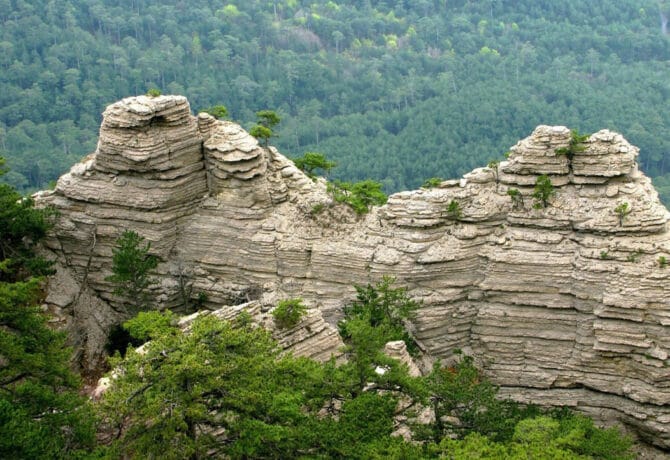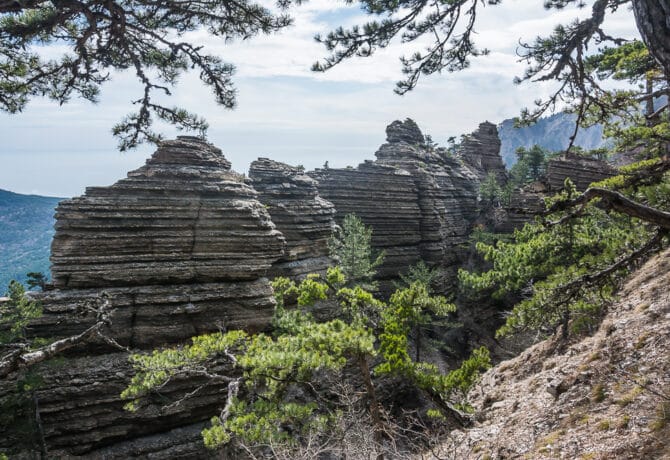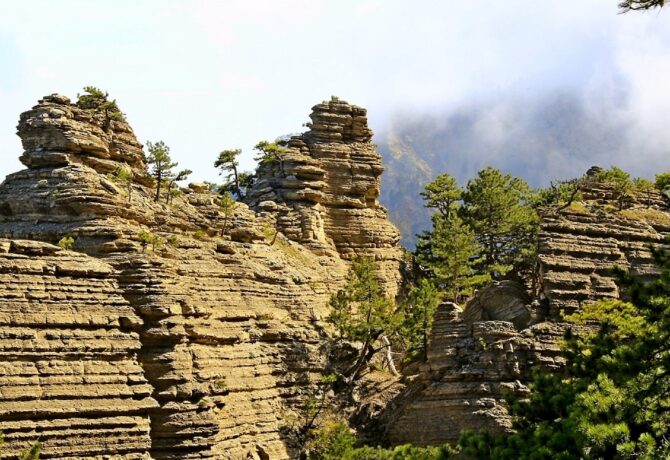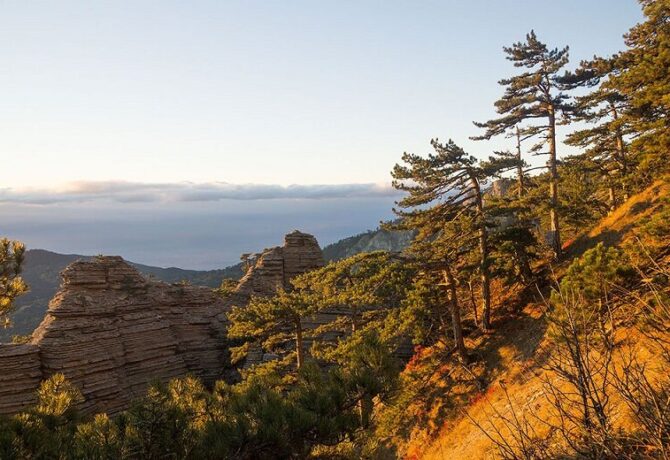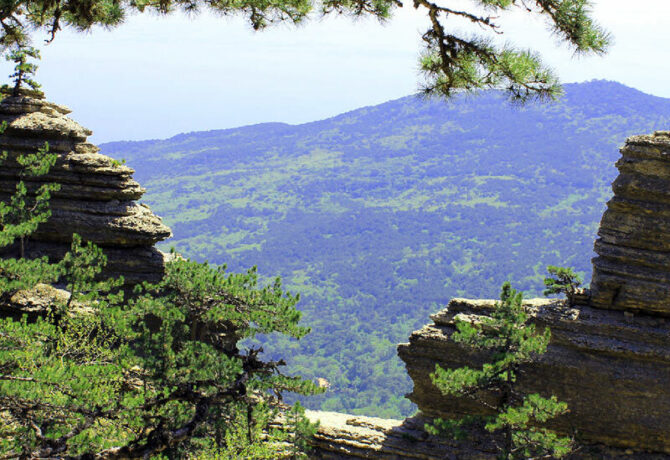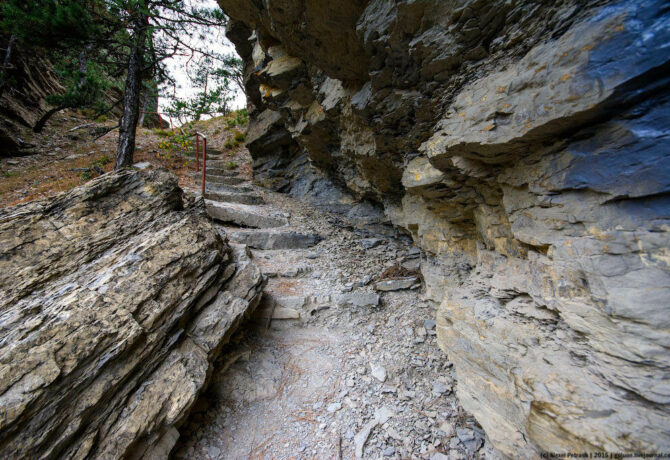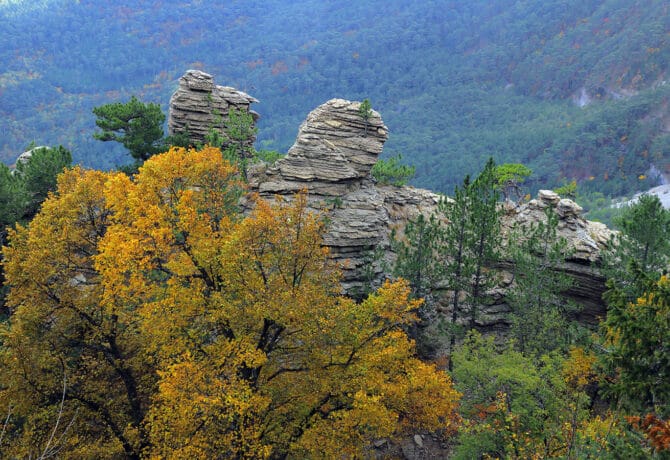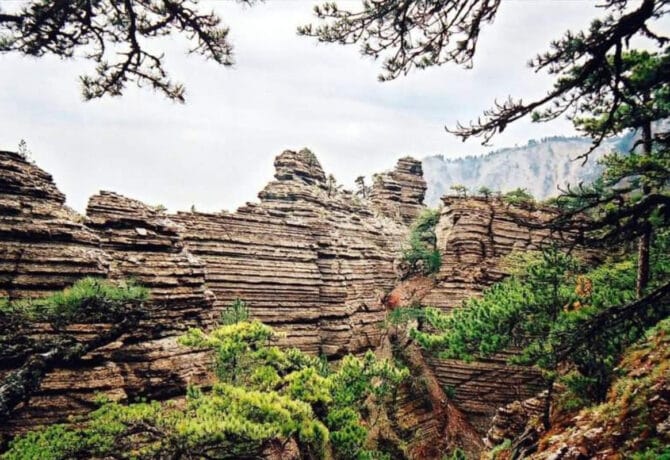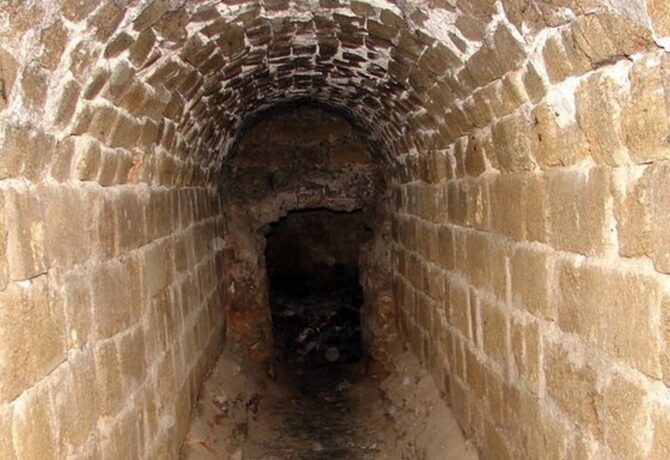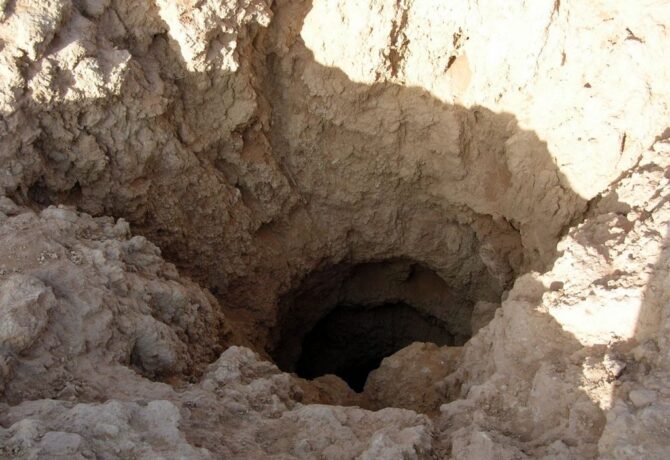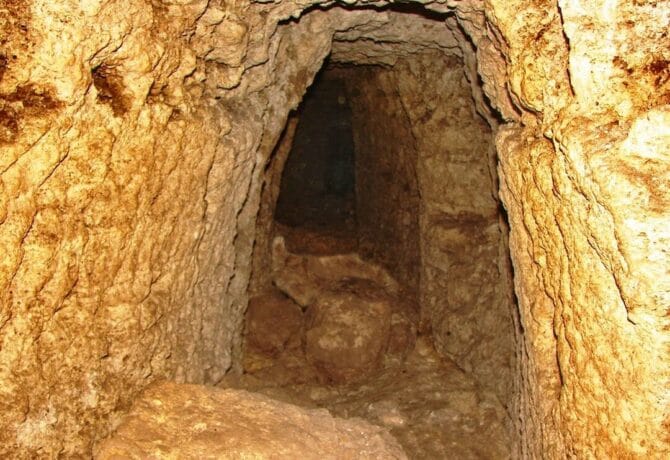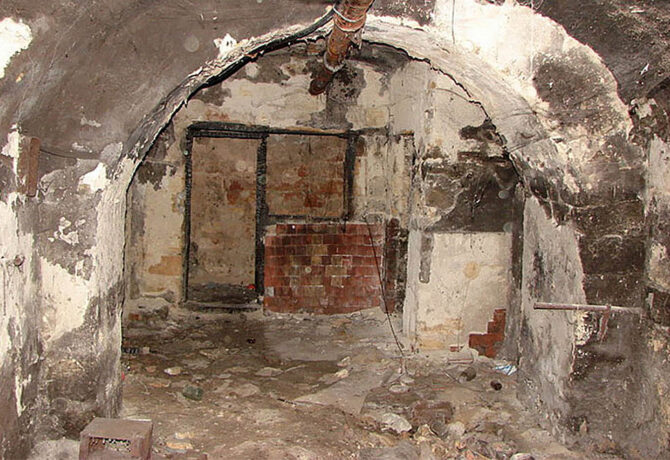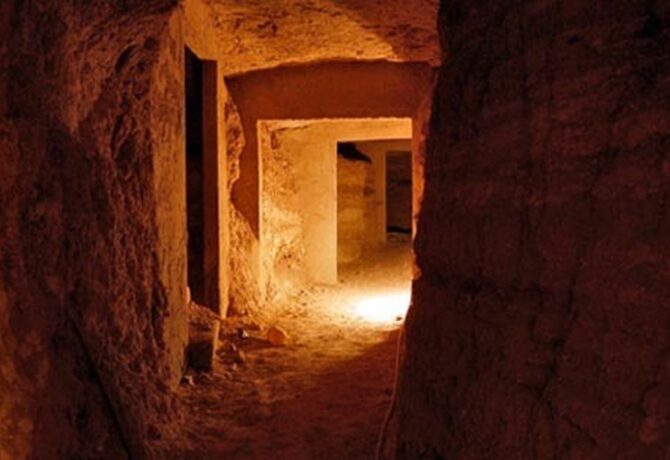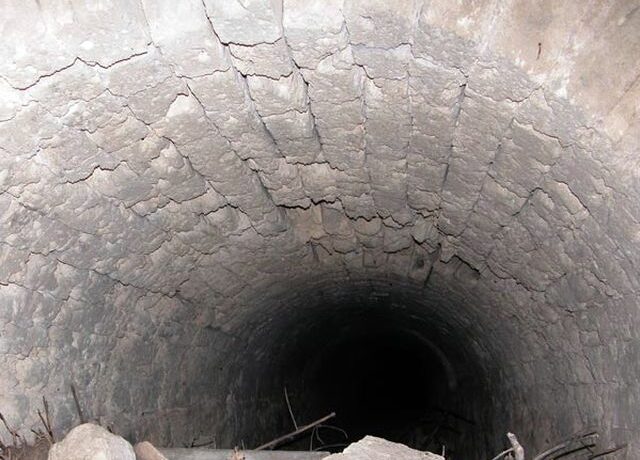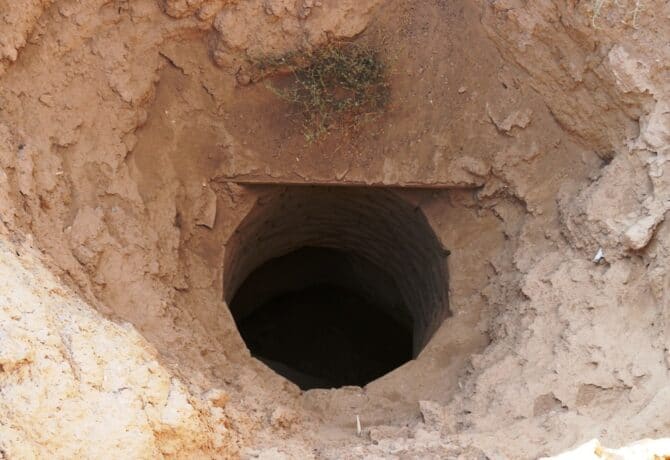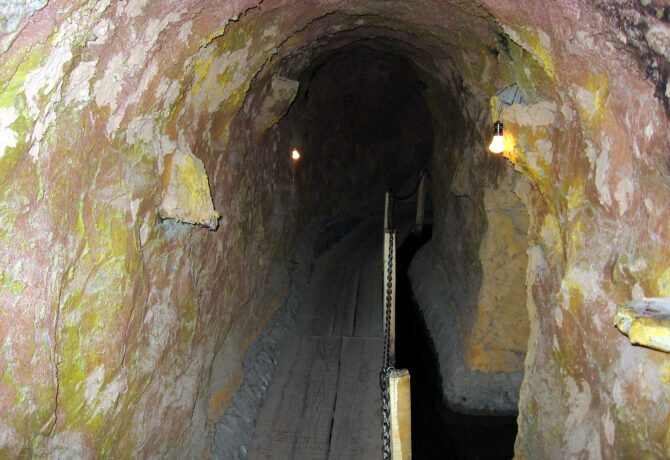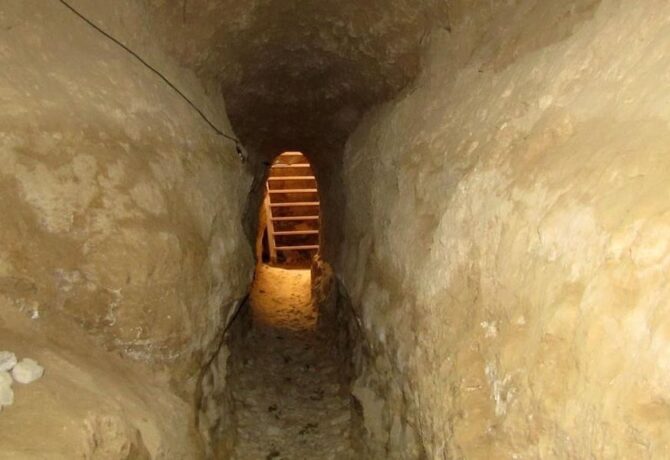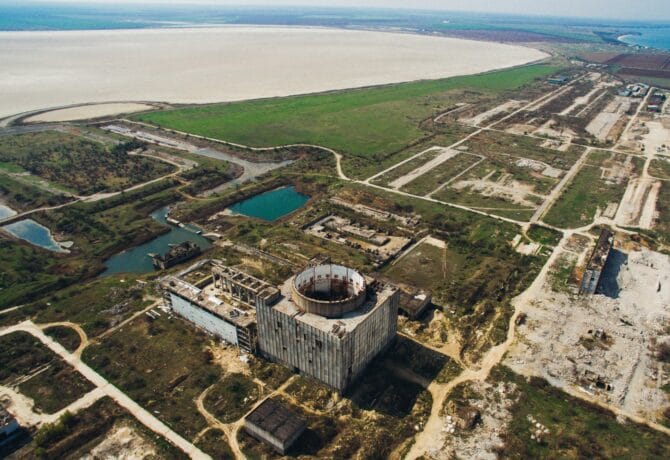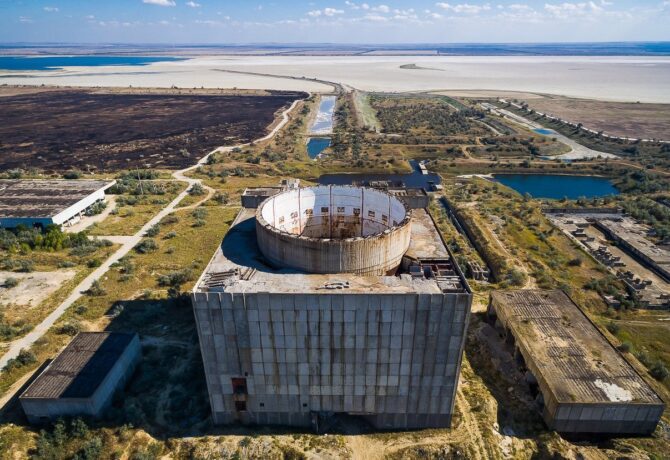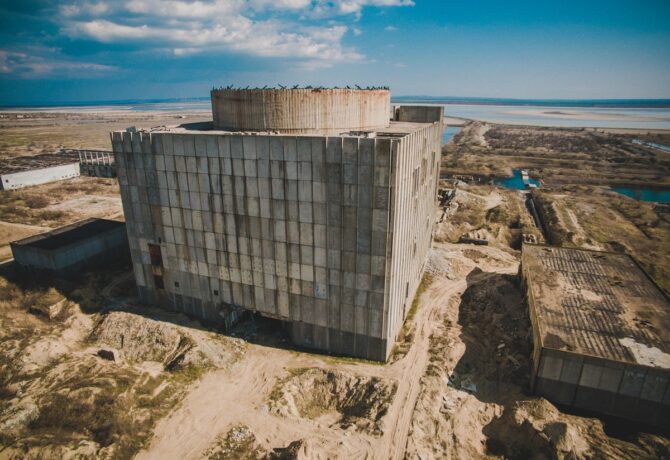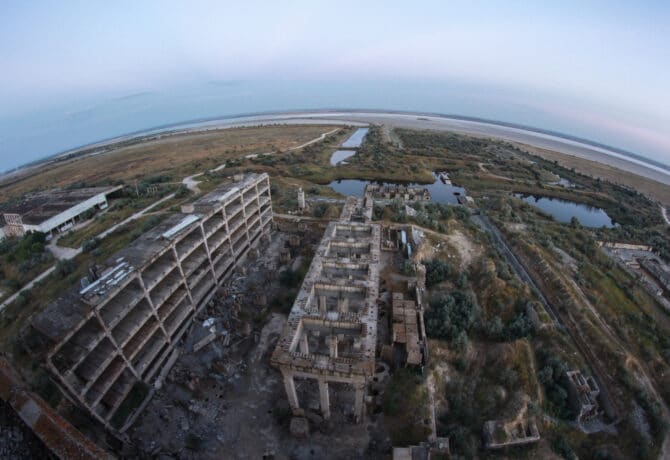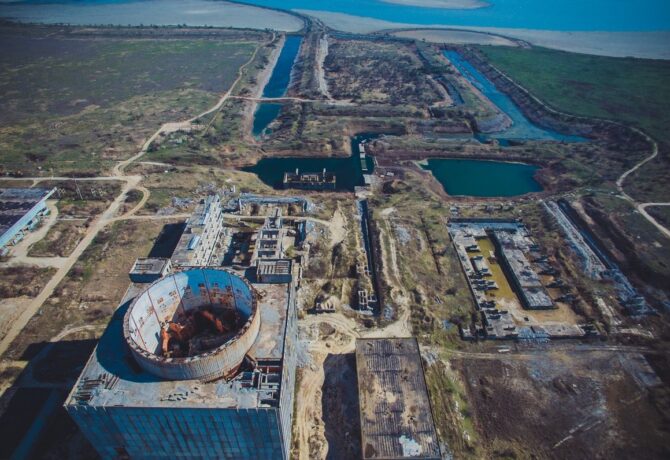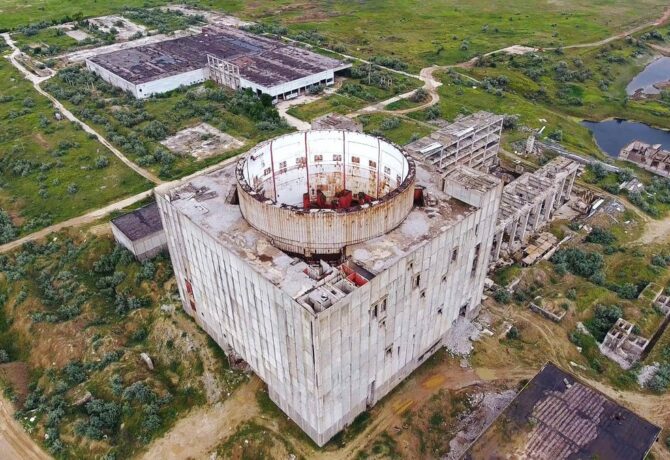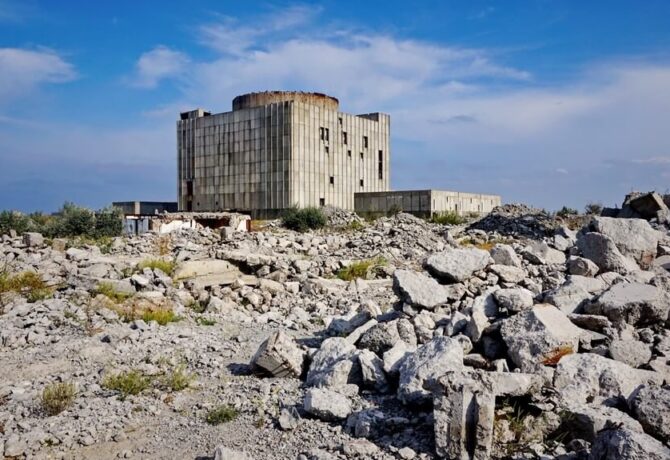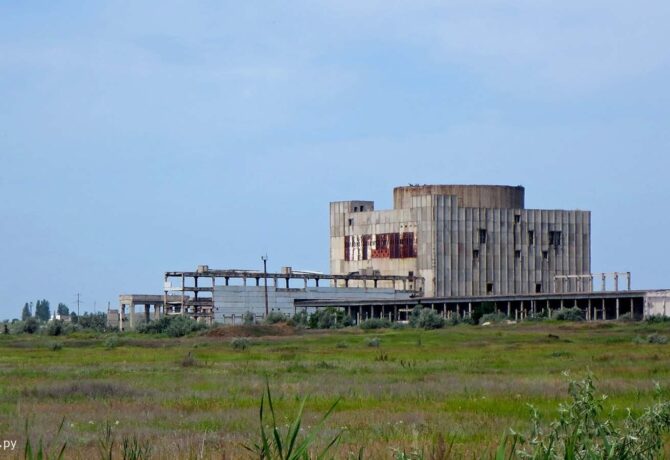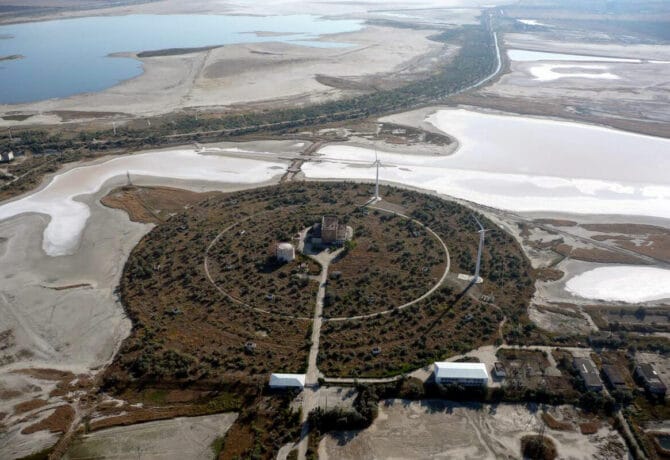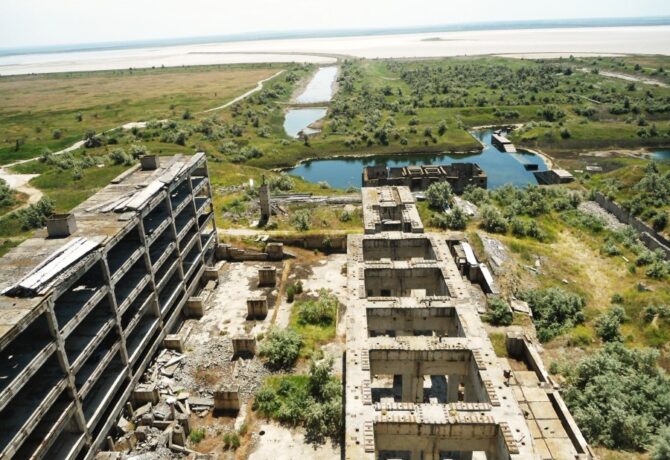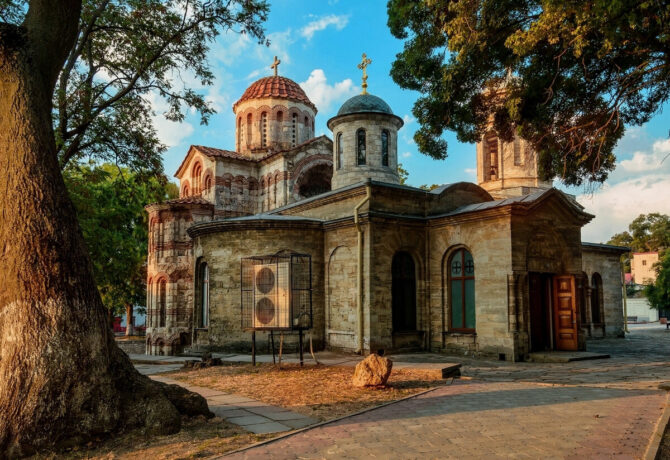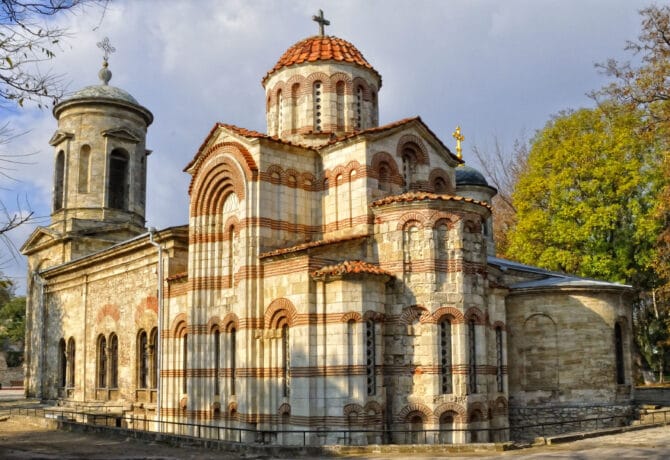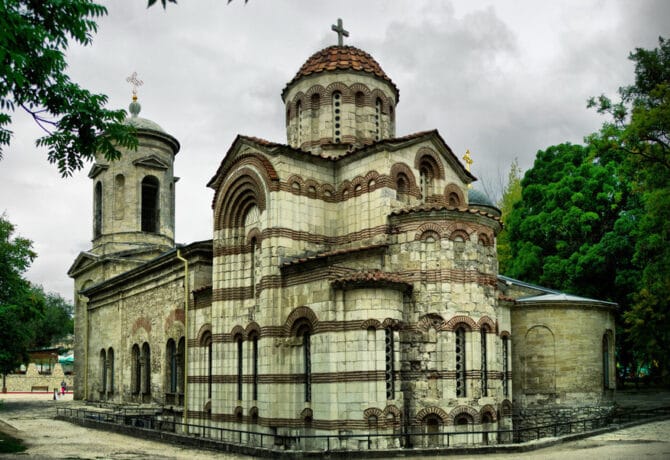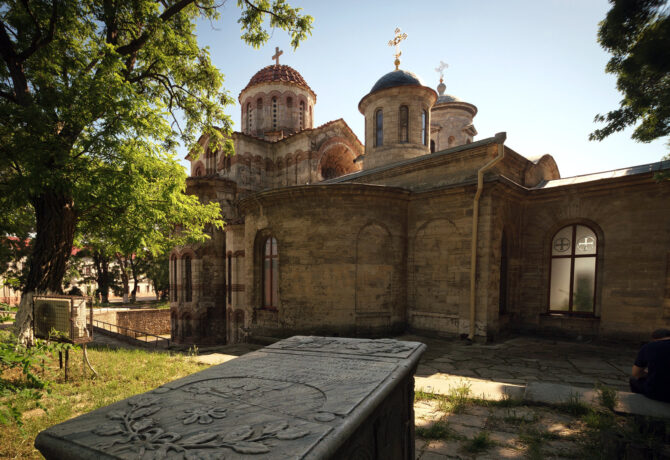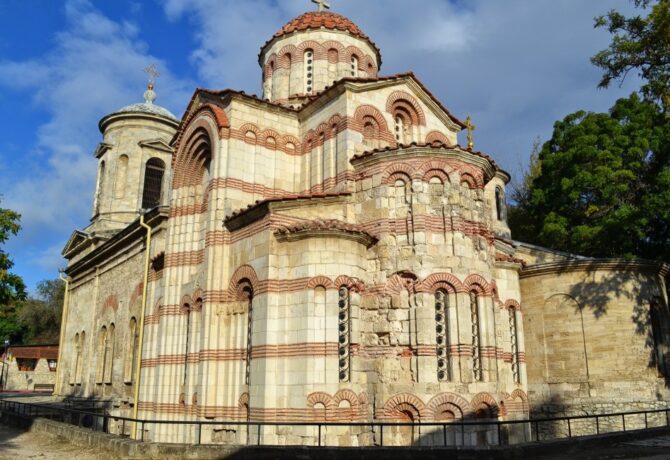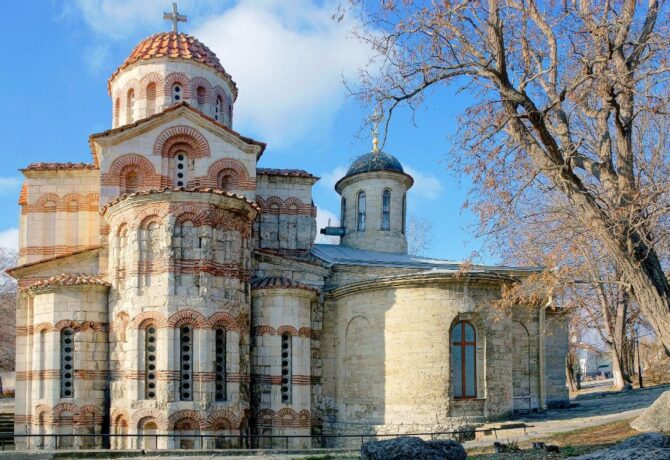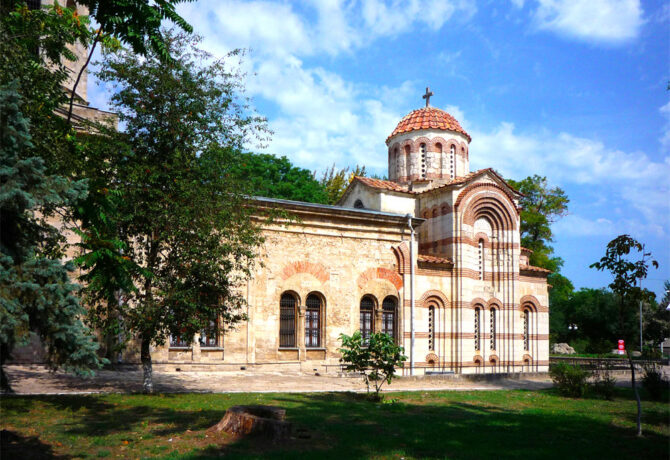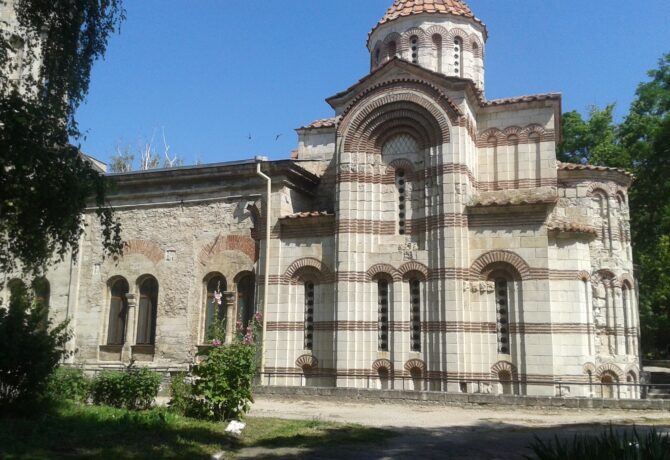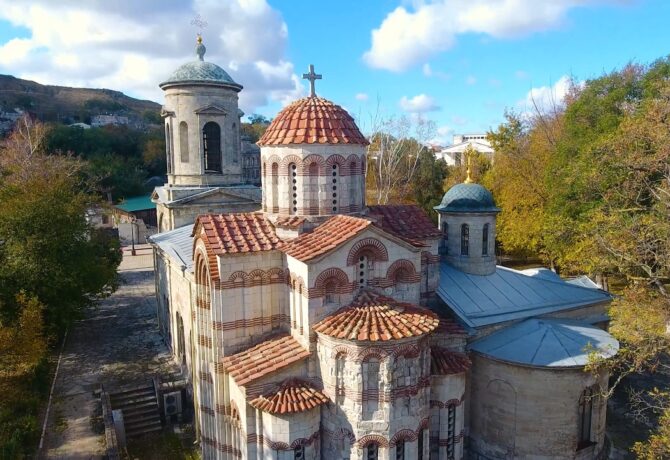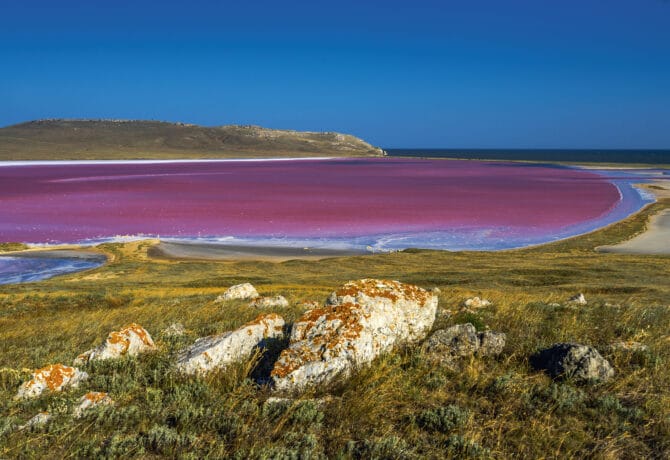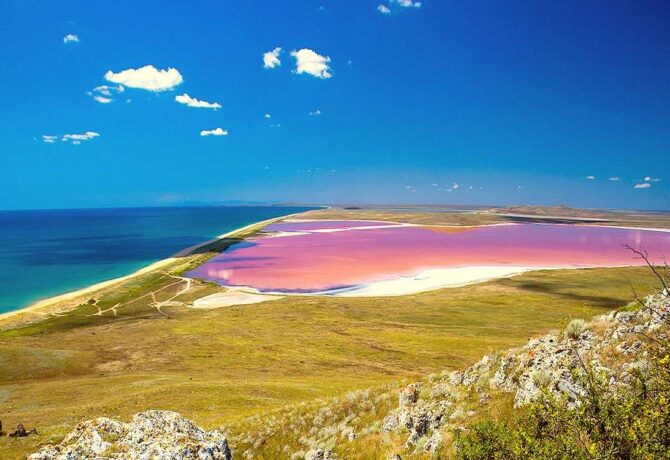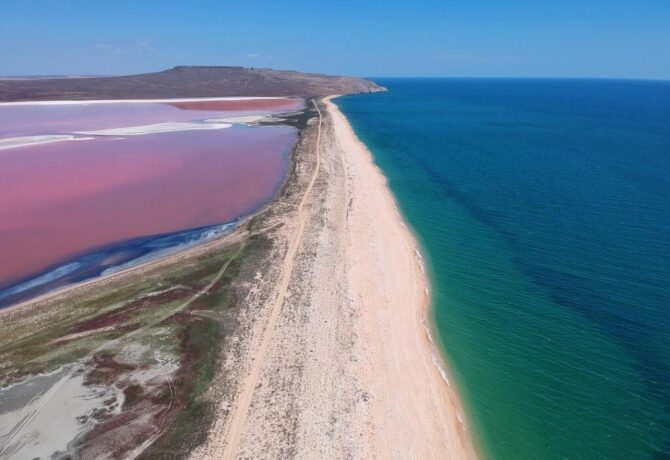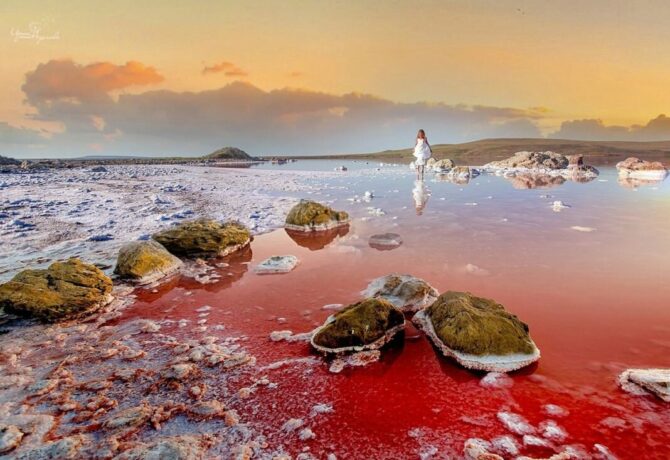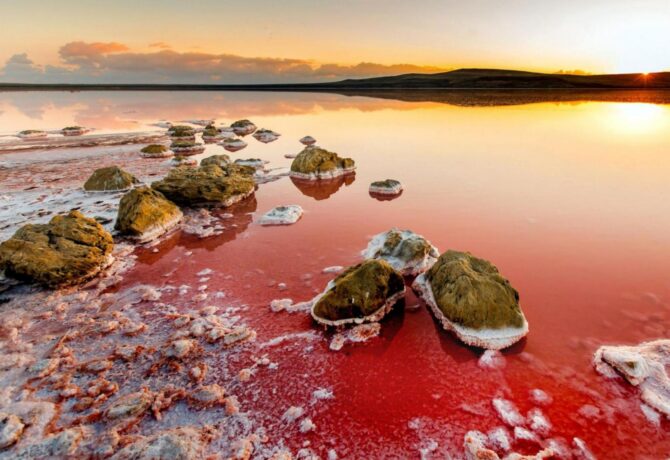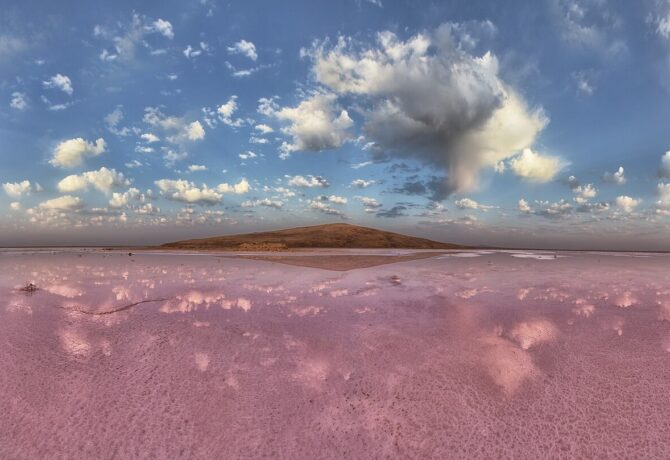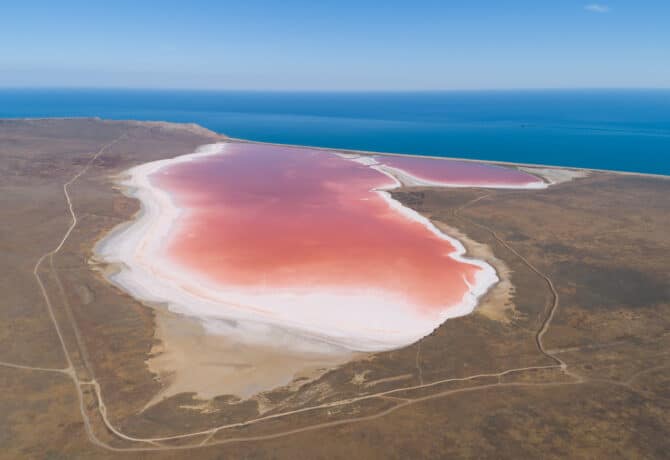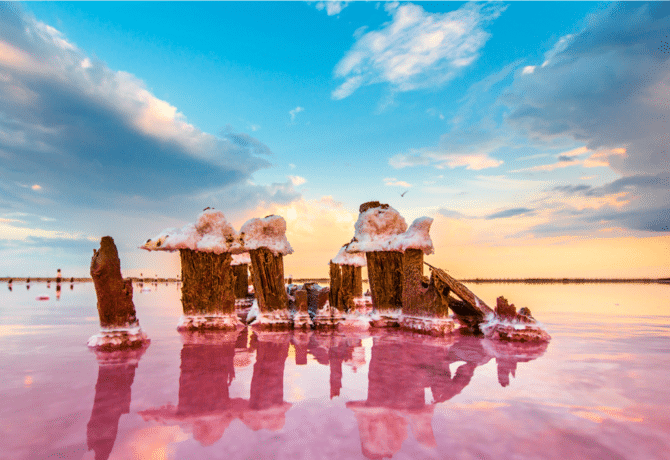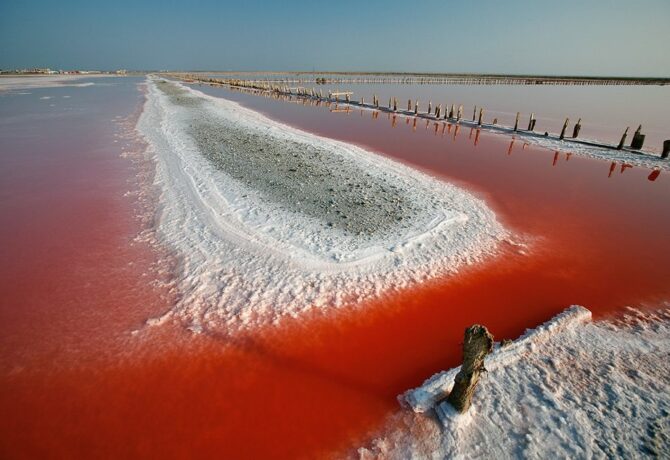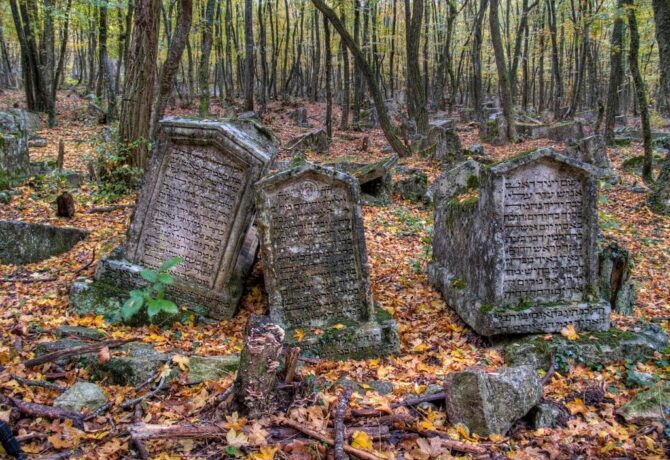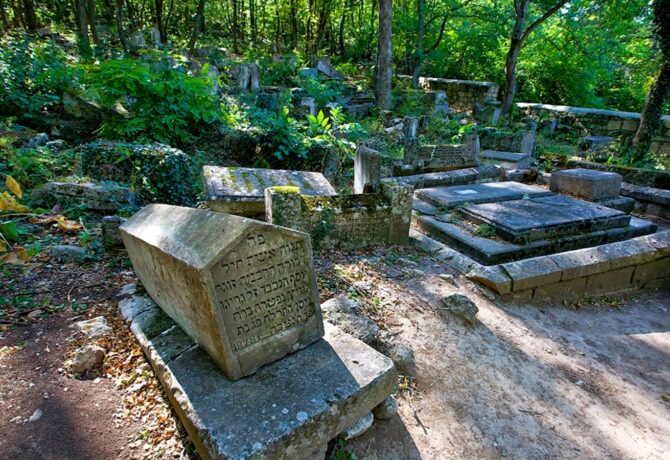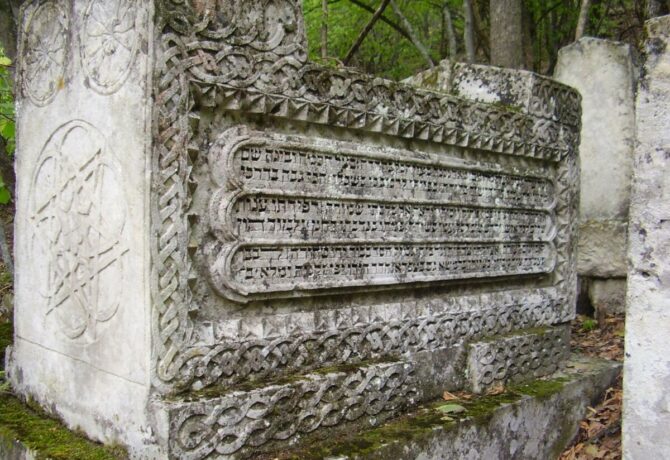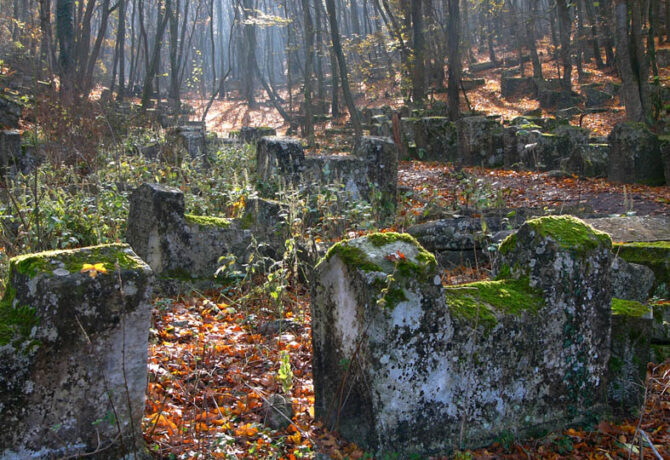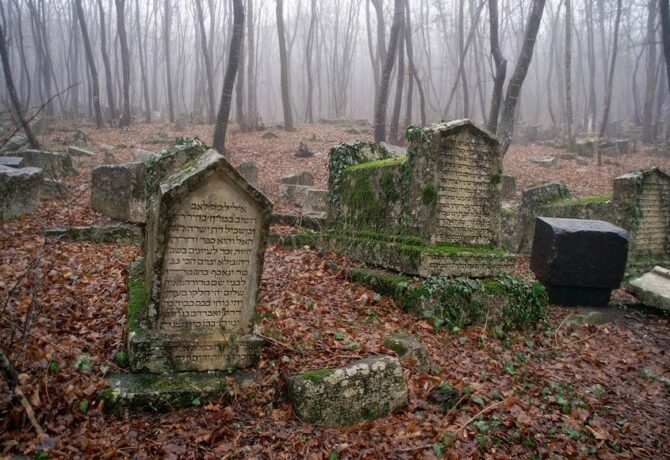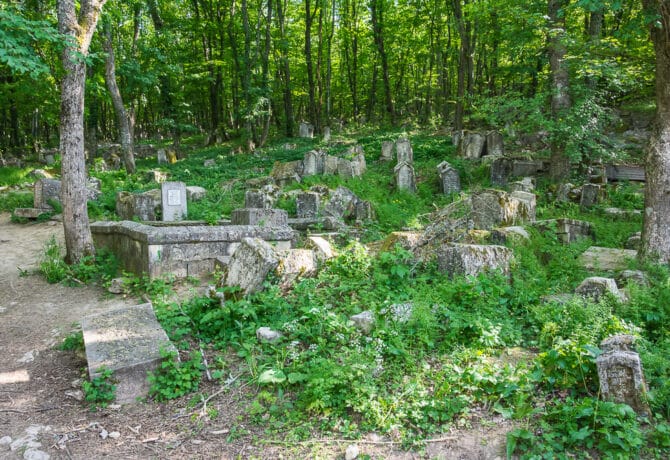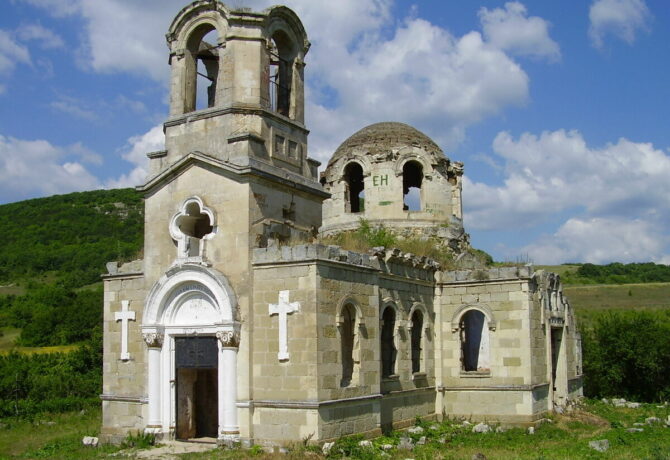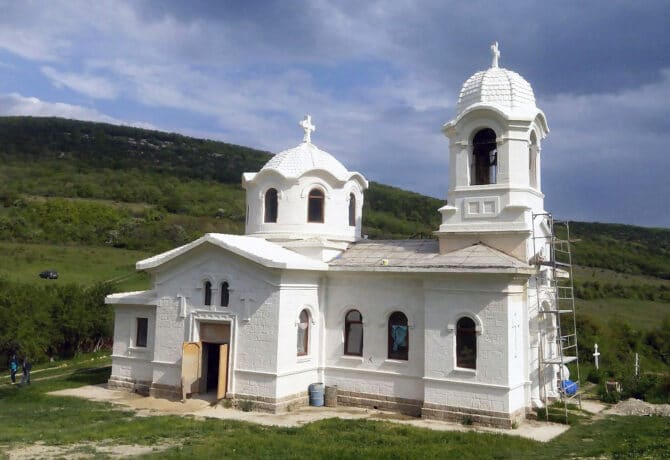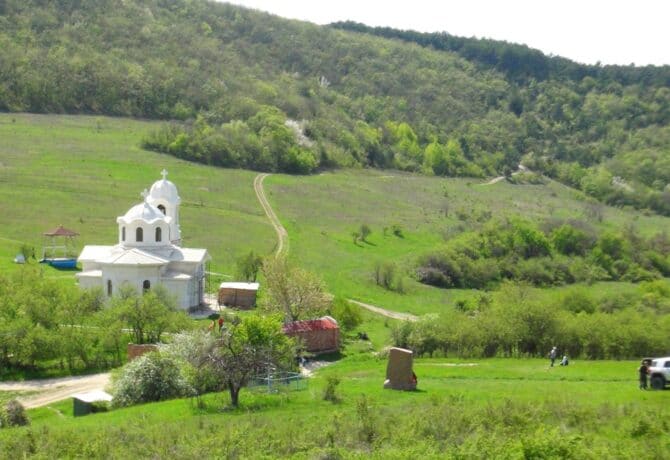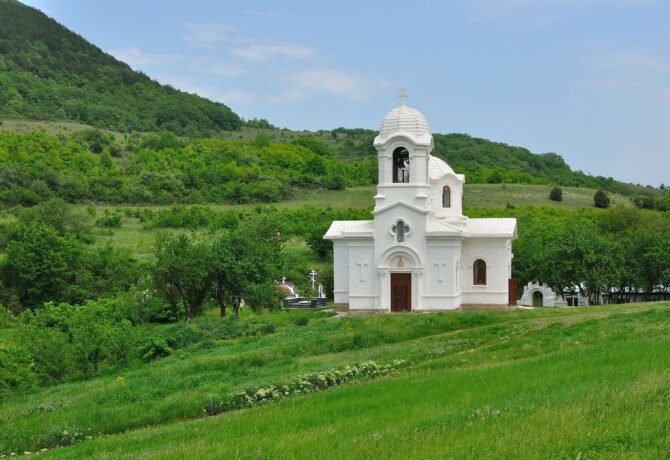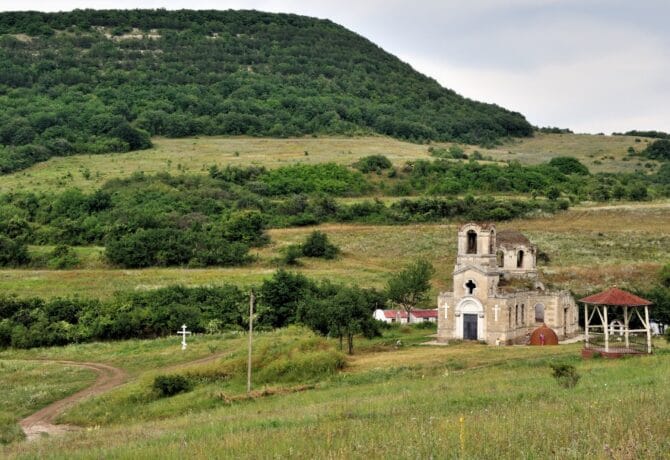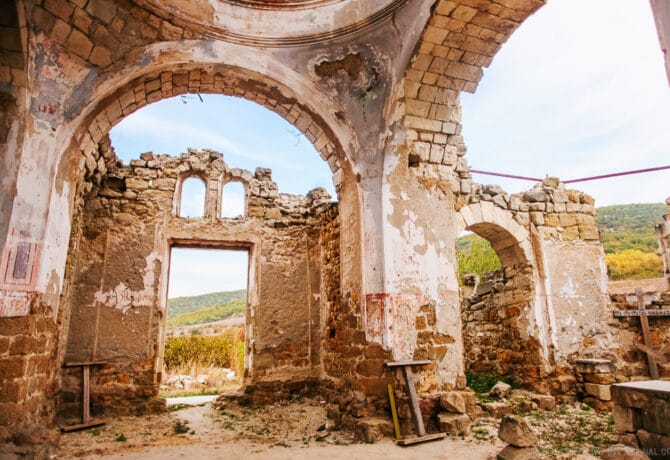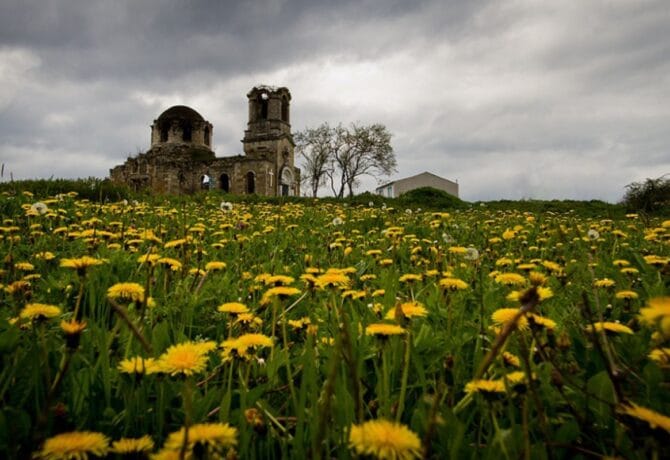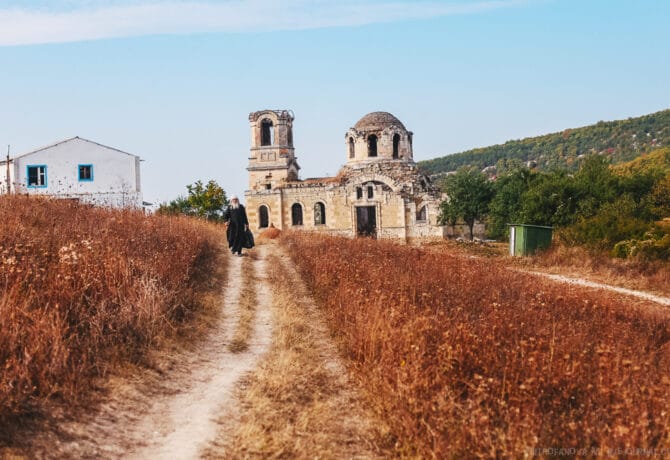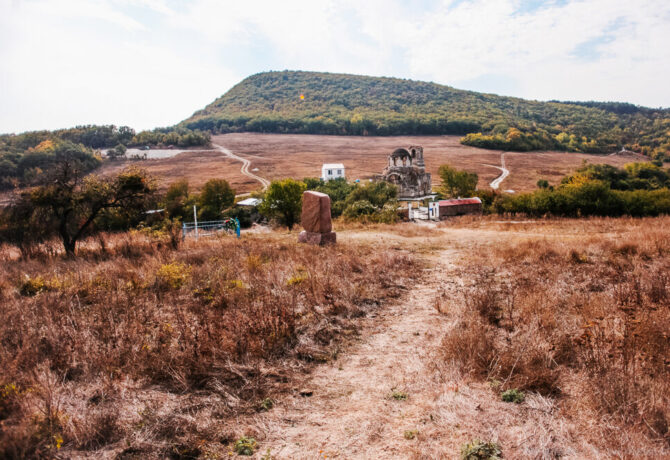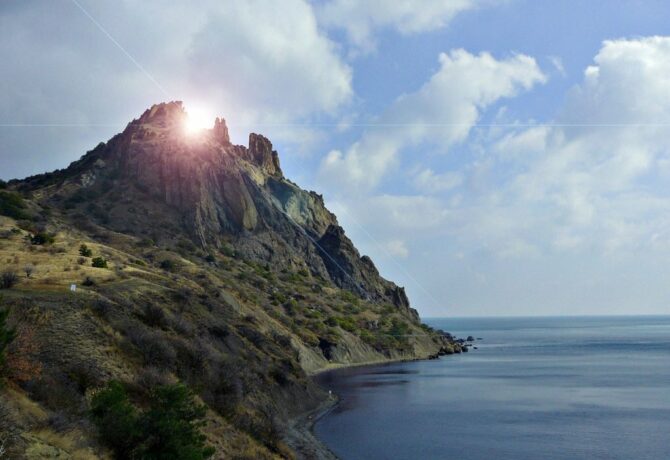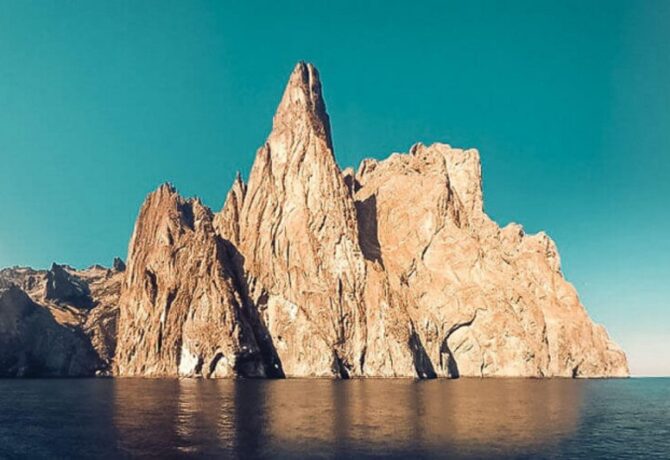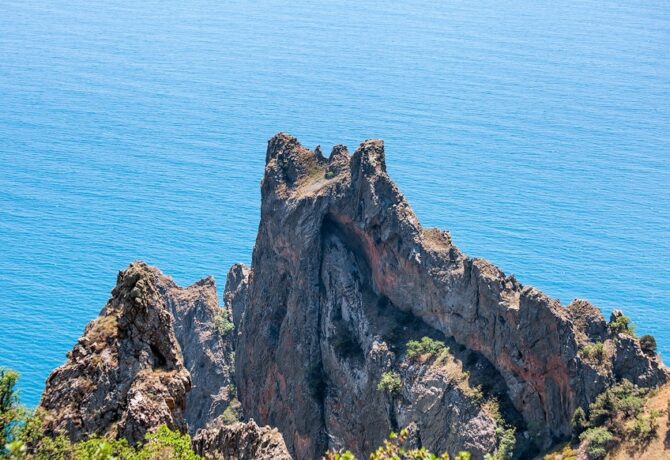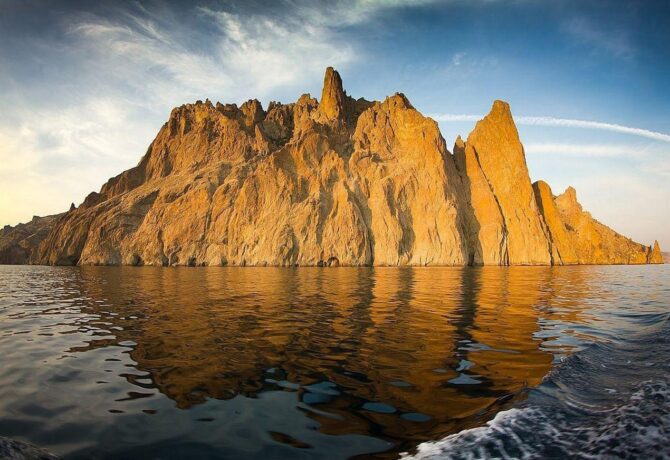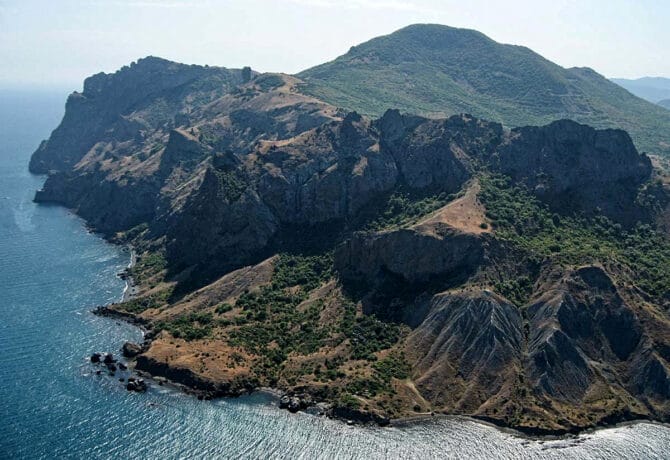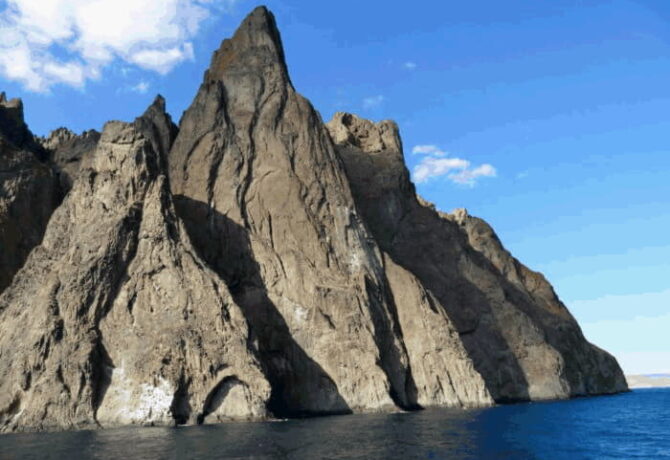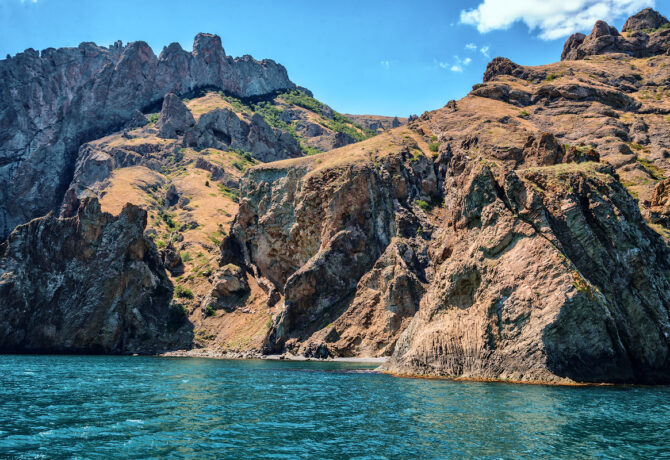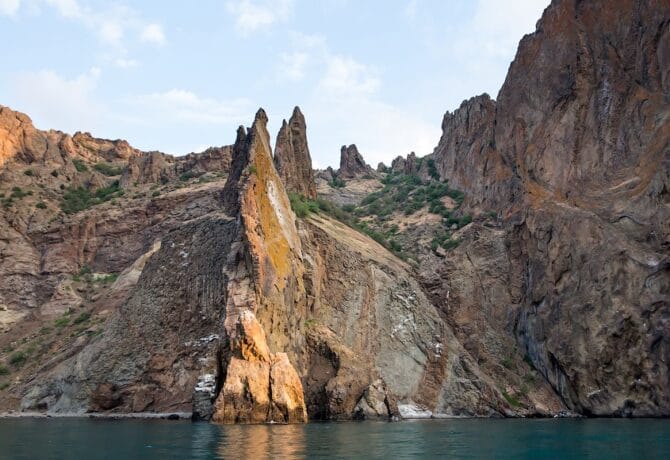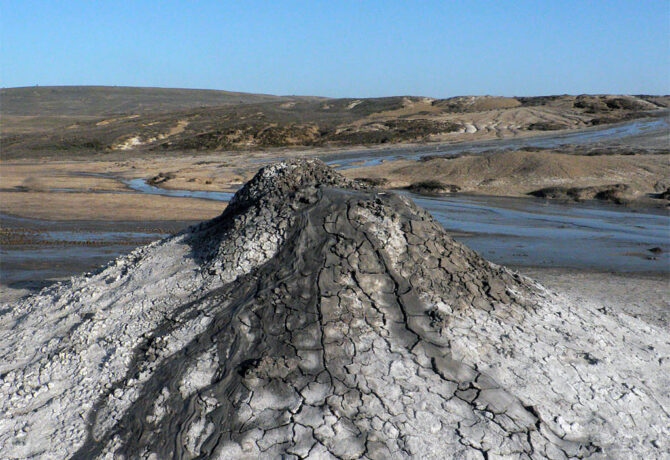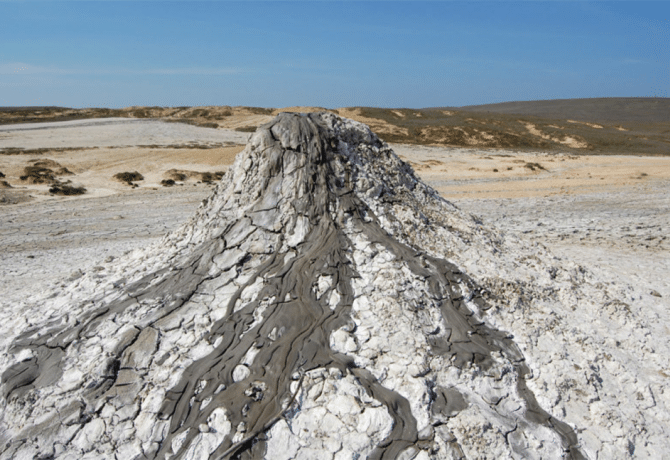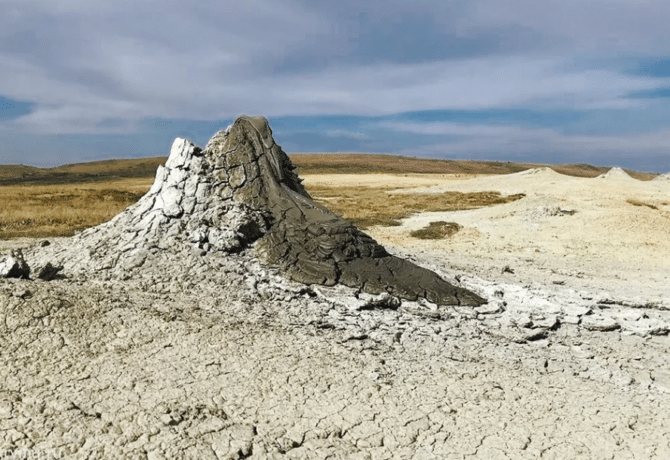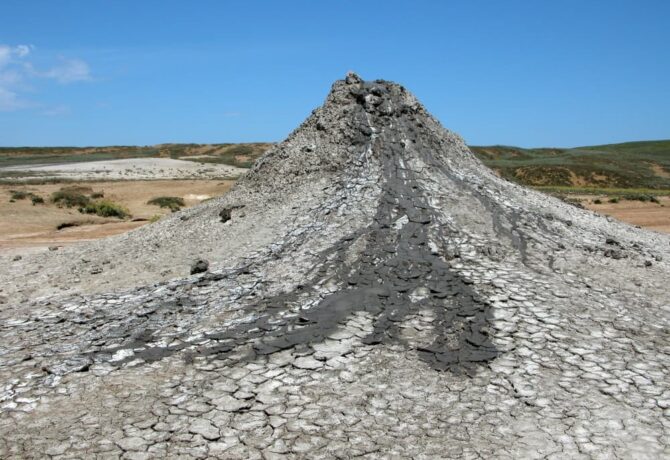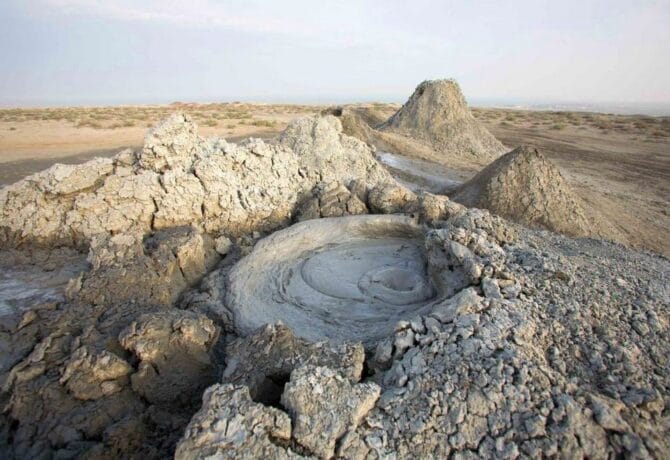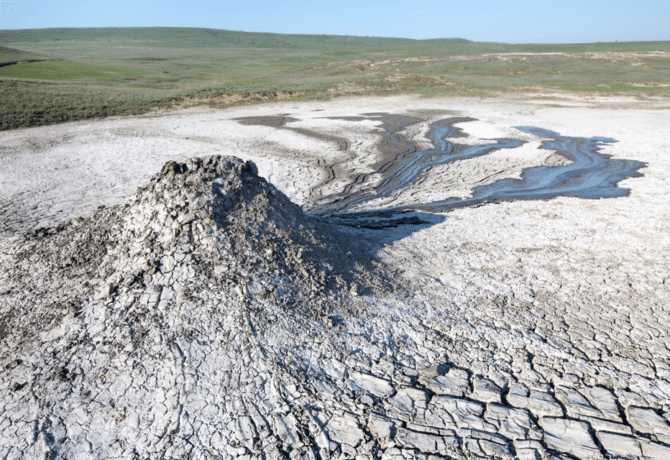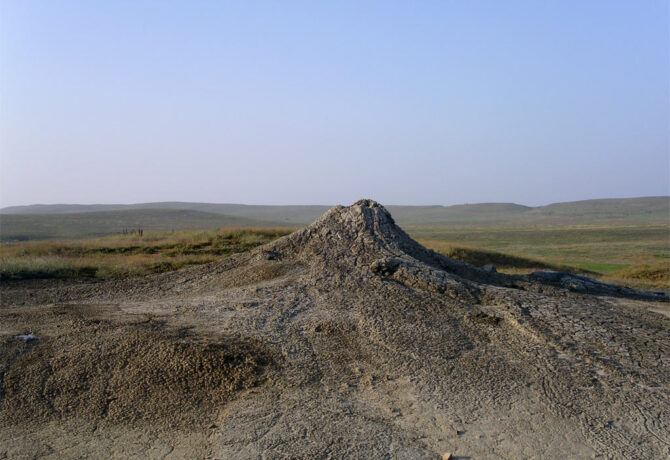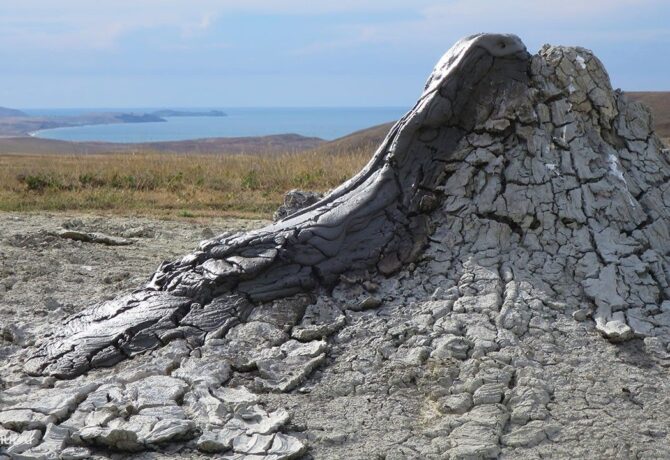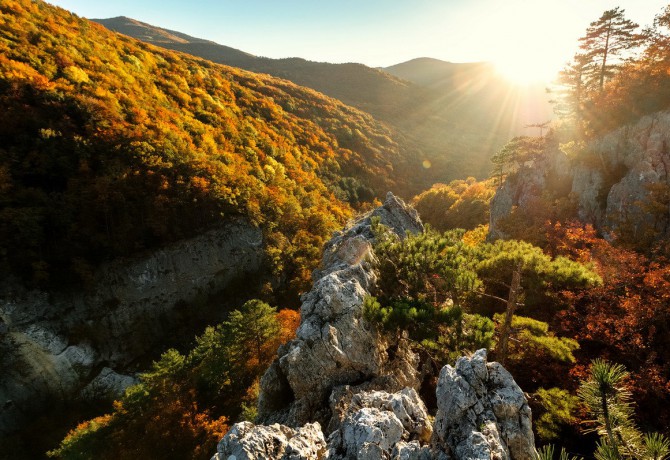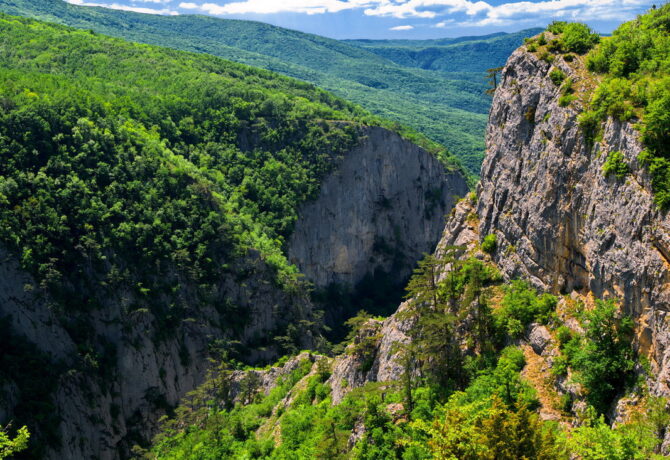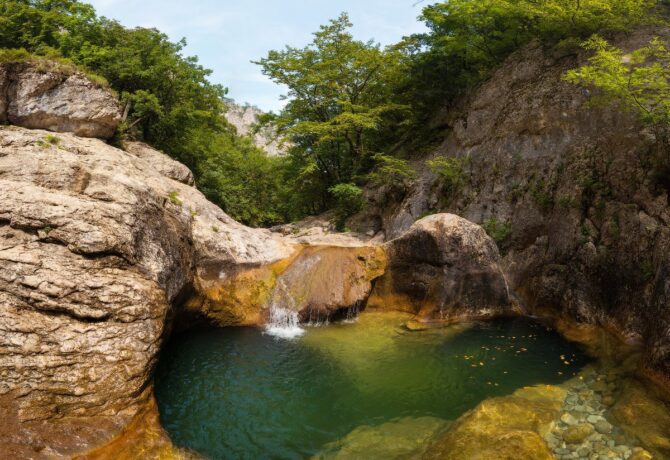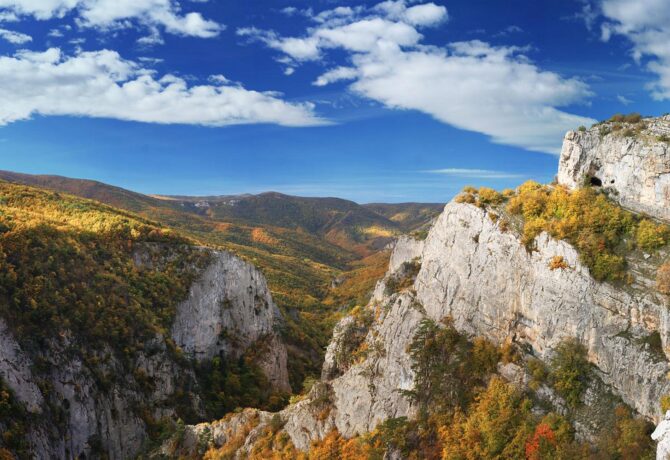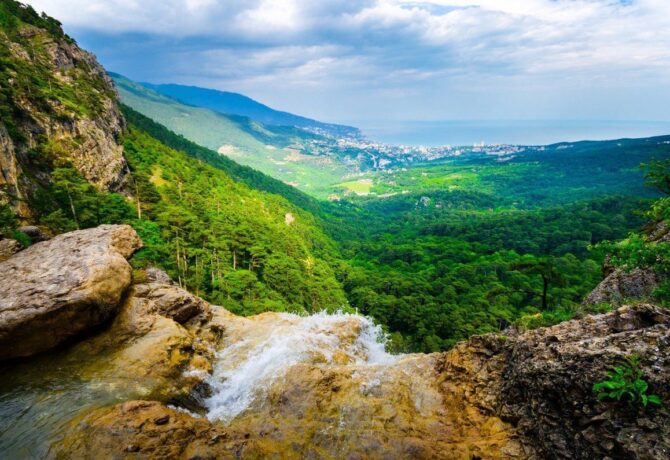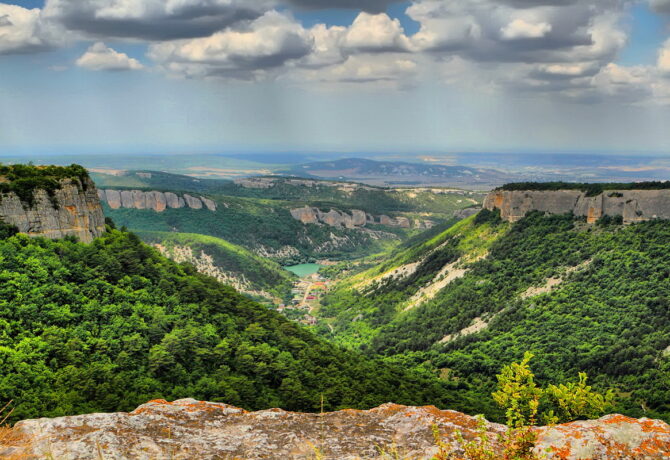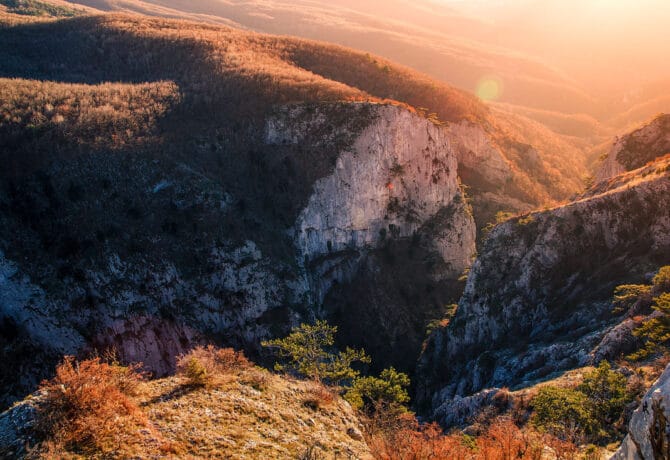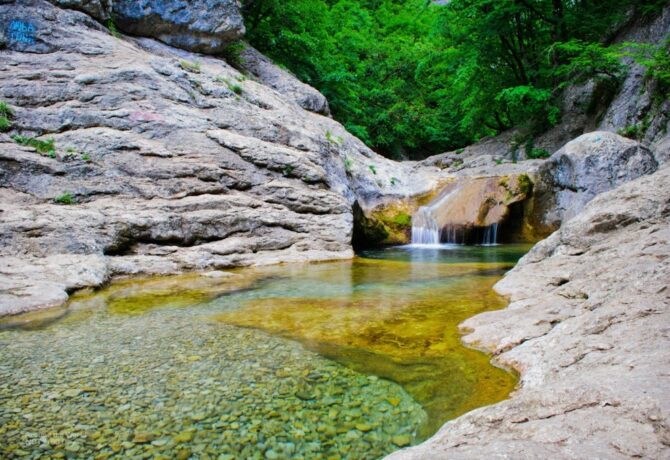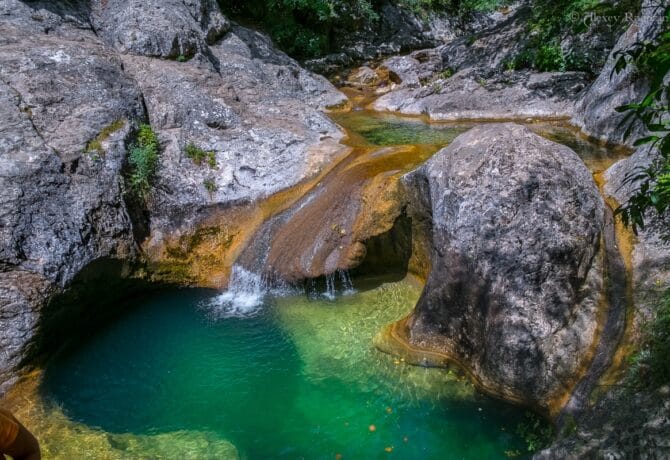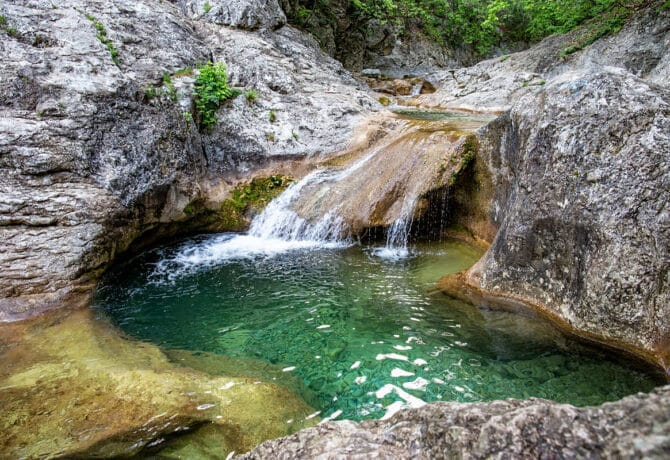Crimea is an amazing place. For many millions of years, something was constantly happening on the peninsula: volcanoes erupted, brine boiled, rocks collapsed and rose again, bays shallow and lakes dried up, the steppe bloomed, burned and bloomed again.
Crimea is a place where man has not yet been able to defeat nature. There is not a single centimeter where a person’s foot has not stepped, on the contrary: the Taurians and Cimmerians, the Scythians and Sarmatians, the Greeks and Khazars, principalities, empires, republics – semi-desert saline Crimean lands are traced along and across. For every piece of infertile Crimean land, someone once shed blood, killed and betrayed. And where are they all? And the Crimea is and will be when the last whitened bone of its owners or conquerors crumbles into white dust and flies away, being persecuted by a cruel dry land.
- 1 Forward to health along the Taraktash corridor
- 2 Not/available water: karizy in Evpatoria
- 3 City of Atomic Dreams: Schelkino
- 4 Church of St. John the Baptist in Kerch
- 5 The saltiest lake of Crimea: Koyashskoye Lake
- 6 Ancient graves: Josaphat Valley
- 7 Crimean history as it is: the village of Lucky
- 8 Extinct volcano Karadag
- 9 Lots of mud and hill Of Jau Tepe
- 10 Bath of Youth in the Grand Canyon
- 11 Attractions Crimea on map
Forward to health along the Taraktash corridor
Crimea became an all-Russian health resort long before the appearance of the USSR on the maps of the world, literally immediately after the victory in the Crimean War. Many venerable Russian scientists drew attention to the unique opportunities for recovery on the peninsula, and the famous climatologist V.P. Dmitriev including. Long walks on rough terrain and clean air in the pine forest helped him to recover from tuberculosis, so it was on them that he focused in his recommendations for treatment.
He recommended that patients walk along the trail, which was specially equipped for these purposes. Of course, decades have passed since then, and the modern Taraktash trail is in many ways different from the one of Dmitriev, but the main part of the route – the stone corridor along the Taraktash tract on the Yalta Yayla – remained the same.
The tract Taraktash was formed as a result of a landslide millions of years ago and froze, teetering on the verge of destruction, so that we can see a real miracle of nature. The layered structure of rocks, pines, strange shades of rocks create both a fabulous and a little frightening atmosphere. The thin wall of rock that slwed down the slope along with the landslide looks particularly impressive. And the air – in the tract is so strong aroma of needles that with unaccustomed can get dizzy.
By the way
Taraktash – the corridor, the trail, and the rock ridge that gave them its name – is beautiful at any time of the year. However, the most thrill will give a walk in early spring, when the primrose is just blooming.
Not/available water: karizy in Evpatoria
Unique not only for the Crimea, but also in many respects for the Western world, the system of water pipelines – kariz – comes from Central Asia, where it has never been too good with water resources. They learned to collect every drop of dew, flood and groundwater in a special system of wells united by underground channels.
It is no secret that Evpatoria stands on hundreds of kilometers of catacombs. Some of them were hollowed out in the rocks in the days of Gezlev and served as a water supply to the city: pipes made of red clay are connected so tightly that they cannot be separated. And yes, there is still water there.
By the way
Karizy in Evpatoria is a long-closed and abandoned matter: during the Soviet era, it was decided that spies-divers could hide in underground passages, so the catacomb system was sealed. Nowadays, most of the entrances to the adits, accessible passages and wells are on private grounds. If you want to know more about this really extraordinary Crimean attraction, you need to contact the club of local speleologists.
City of Atomic Dreams: Schelkino
The youngest city of Crimea, according to the idea of the Soviet authorities, was to become a model of atomic happiness and advanced technologies. In 1981, the All-Union shock construction began here, the country needed a new nuclear power plant, which was even called the Crimean. Everything necessary for construction was delivered to the site, specialists were brought from all over the Union, the reactor was dragged by special train… But, as often happens in the Crimea, something went wrong – a few months before the delivery, critical vulnerability and seismic instability were accidentally discovered.
In general, everyone quit. So it is now ready for 80% of the nuclear power plant, collapsing under the harsh Crimean winds – perhaps this is the most epic abandonment in the post-Soviet territory. Schelkintsy went somewhere – to Ufa and Bangladesh, to Kiev and Moscow, to Magadan and Barcelona. And the city itself has turned into a monument to itself, which must be seen by everyone who was born after 2000.
In Schelkino:
- filmed The Inhabited Island;
- there are no streets, only house numbers;
- The Sea of Azov on the beaches is relatively deep;
- the city authorities had the idea to rename the city Kazantip;
- peaches and almonds grow along the roads.
By the way
Schelkino is located near Cape Kazantip, which is distinguished not only by chic beaches, but also by history: until 1998, the most otvyazny rave festival in the post-Soviet space – Kazantip was held here. Then he moved somewhere, for some reason taking the name, but it did not bring him happiness. The popularity of the rave faded, and with it the interest of young people in the festival.
Church of St. John the Baptist in Kerch
Near-Christian politics has always been a dark affair and was built on primogeniture. Whose temples are older, those are more important (but this is not accurate). For example, in Kerch there is an active Orthodox church – perhaps the oldest of the currently operating Orthodox churches in Russia. However, this is not proven: yes, at a time when spaceships to bowie’s songs fly to Mars, in Kerch they can not date the church. Even despite the cross-domed architecture, inscriptions, legends and testimonies of foreign travelers.
The temple, which in recent years is called the temple of John the Baptist, somehow looks blurred on the routes of pilgrims. While devout pilgrims visit brilliant remakes, the old church in Kerch modestly holds services, and money for the complete restoration of medieval frescoes, perhaps written by Theophanes the Greek himself, is not enough.
By the way
On the column there is an inscription that directly indicates that in the VII century the temple was already there. But historians are not ready to agree, so they postpone the dating until the VIII-XI centuries.
The saltiest lake of Crimea: Koyashskoye Lake
On the southern coast of the Kerch Peninsula there is a surprisingly beautiful lake, which has many names – Koyashskoye, Opukskoye, Alchin, Elkenskoye. Everyone who came to the salty estuary, whose waters are painted in pink and lilac color, hurried to call it in his own way – so the lake turned out to be hundreds of names.
Koyash Lake is endorheic, that is, it is gained from precipitation and surf, and dries up under the sun. The drier the weather, the brighter the color of the lake and vice versa. Microscopic algae is responsible for the shades, which responds to an increase in temperature with an increased release of pigment, sometimes even going into a saturated crimson.
Near the lake there is a heavy smell of estuary, iodine, algae and something no less disgusting: a person who is not accustomed to such amber will be unbearable to be there.
By the way
Thousands of greedy tourists come to look at the lake every year, who are not fed with bread, let them heat them into bags of healing mud and break salt crystals for souvenirs. Fortunately, Koyash Lake is a nature reserve that is protected to the fullest extent of the law. Nothing to take out of its territory is not allowed, swimming there is also impossible.
Ancient graves: Josaphat Valley
Not far from the cave city of Chufut-kale, the famous center of religious and cultural thought of the period of the Crimean Khanate and the Golden Ulus, is the most Gothic place of the Crimea – the oldest Karaite cemetery, the resting place of real Crimeans. Not pathetic immigrants, but people to whom the spirits of the Crimea were favorable, who got along with its water and winds.
From Chufut-kale there were stones, and from the Karaites – a necropolis in the Jehoshaphat Valley. There are more than 10 thousand graves with stone tombstones. It is worth learning more about this, and then see firsthand: the half-abandoned Karaite cemetery makes a crushing impression that far exceeds the power of the impact of medieval burials in Europe.
By the way
The Jehoshaphat Valley is mentioned in the Old Testament. Since it is not completely clear where this is, most researchers identify it with the Kidron Valley, that is, part of Jerusalem. Jews and Muslims believe that the Jehoshaphat Valley will be the site of the last judgment. The Crimean Josaphat Valley is just a religious quote from researchers. The Karaites themselves called the valley Balta-Tiimez.
Crimean history as it is: the village of Lucky
History does not tolerate unambiguousness. The deeper the knowledge and the stronger the involvement in events, the less certainty in the conclusions. Even when everything is clear, really… nothing is clear.
The early medieval Greek settlement of Lucky is an illustrative illustration of this. It was founded around the VI century AD by the descendants of the Alans, choosing a small valley near the Kacha River. Lucky (from the Greek Yama) was never a crowded village, in the best of times a couple of hundred people lived here. They never lived peacefully, but the XX century bypassed even the bloody massacre under the Ottomans and the plague brought by the Genoese.
In 1942, the village was destroyed by the Nazi occupiers, and some of the inhabitants were shot. After the liberation, the survivors wanted to return, but the country’s leadership decided to deport the Crimean Greeks – who for the Urals, who to Central Asia. On the site of Lucky organized a collective farm Goryanka, where brought immigrants from the Oryol and Bryansk regions. However, in the 60s the village was again disbanded, this time completely.
Now on the site of Lucky / Goryanka stands a dilapidated monastery of St. Luke, in which four stern monks permanently reside. She welcomes travelers (women are not allowed, but will take food and water to the courtyard), conduct unhurried conversations and invite them to pray. It’s quiet and easy, so much so that you want to stay.
By the way
The view of the tragedy of the village of Lucky is different. Russian official historiography believes that the destruction of the inhabitants was carried out by crimean Tatar collaborators who hated their Greek neighbors. The Western European position blurs the details without concentrating on the nationality of the war criminals: the villagers were killed by the Nazis, without specifying the details.
Extinct volcano Karadag
Crimea has everything, and an extinct volcano, the same age as dinosaurs, too. Karadag (translated from the Crimean Tatar Black Mountain) is, in fact, not even a mountain, but a whole volcanic massif with an area of about 20 square kilometers. km between Sudak and Feodosia. It’s so wonderful that it’s worth the rest of the peninsula. Karadag is beautiful with a special savagery of broken lines, detached cliffs, black gorges and overhanging ridges. To explore it, it will take a few days, good hiking shoes, a backpack and a guide from the locals. A really good guide will tell you about the Karadag lizard, which lives under the mountain and comes out only on a full moon. Or on a new moon, it does not matter, the main thing is that this guide was personally acquainted with the ancient reptile.
Must see:
- Golden Gate – a coastal rock of arched shape, which the kyrymly called Shaitan-Kapu, the gate to hell;
- biological station together with the old and new dolphinarium;
- Robber Bay and Ivan the Robber Rock;
- Jurassic conglomerates are as old as the world cliffs.
In the warm season, you can walk along the eco-trail, which is created in such a way that tourists do not inflict any damage to the riches of Karadag.
By the way
For several decades in a row, the Koktebel vintage wine factory produced the super-popular white dessert wine “Karadag” from the adapted grape variety Pinot-Grigio. In 2012, something went wrong, hundred-year-long vineyards were uprooted, and the areas were planted with a new hybrid, according to rumors, from America. Buyers told the remake a friendly “Fu”: the new “Muscat Karadag” turned out to be too straightforward, with a primitive aroma and standard taste. Someone explained the suicidal step of the manufacturer by the eternal shortage of water in the Crimea (Pinot-Grigio needed watering), someone – with bright ideas of anti-crisis management, which came after the official bankruptcy of the enterprise. Whatever it was, in wine boutiques on the peninsula you can still buy a bottle or two of “Karadag” harvest until 2010. Connoisseurs recommend trying 2007 or, if the money is all right, look for the famous vintage of 1983.
Lots of mud and hill Of Jau Tepe
There is a lot of dirt in the world, but there are one, two mud volcanoes and one. Therefore, the Crimea has something to be proud of: on its territory there are several clusters of volcanoes that spew mud instead of lava. Or they spethered: fortunately, the peak of activity has long passed, all their modern activities are more of a show than a drama.
All the Crimean mud volcanoes are located on the Kerch Peninsula – nothing personal, it just so happened. The valley of volcanoes is located about eight kilometers from Kerch near the village of Bulganak (Bondarenkovo) and is a pit of several square kilometers with a completely alien landscape. There are an uncountable set of active points – at least fifty – of different sizes and activity.
The largest and most aggressive mud volcano of the Crimea – the hill dzhau-Tepe – is located in the Leninsky district, near the village of Vulkanivka. This volcano has a bad habit of periodically arranging mud eruptions. They say that in the XVII century a restless hill destroyed a small settlement near the foot. In the XX century, eruptions were recorded six times, the last – in 1982.
By the way
Most often, the dirt (by the way, completely cold to the touch) comes to the surface in the form of cute bubbles that burst with a funny sound. Oh, and yes… Be prepared. It stinns.
Bath of Youth in the Grand Canyon
Well, first of all, in the Crimea there is a Grand Canyon. This is a large, more than three kilometers long and more than 300 meters deep, a gorge in the limestones of the Upper Jurassic period, which is located on the border of the Ai-Petrinsky complex. Secondly, the Grand Canyon is a mecca of hiking and cycling tourism. In the calm times of the beginning of the two thousandth, the flow of tourists was so wide that in the summer everyone moved along the canyon like pioneers – in the sense, a goose and trying not to step on each other’s heels.
Thirdly, the Grand Canyon is a difficult route for beginners. Climbs, transitions, slippery stones and deep reservoirs – for example, the so-called Bath of Youth or Lake Kara-Gol with a depth of about five meters. It is filled with water from the nearest springs (if you believe the locals, with silver ions), so it is searingly cold even in the August heat.
Fourthly, there are many baths of youth on the Crimean (and not only) rivers, but this one, on the Auzun-Uzen River in the Grand Canyon, is special. To understand this, it is enough to plunge into it.
The bath of youth is the end point for civic routes. Further along the canyon to go too dangerous, there are landslides and landslides. And if you stay near the Bath of Youth with an overnight stay, you can hear how the Shaitans howled.
By the way
Baths of youth are called reservoirs (evosion boilers), which are formed at the site of the fall of waterfalls. Crimean Tatars call them legenlers – troughs. Legenlers are usually very deep and cold, any tourist jumps out of there as if on wings – literally rejuvenated in a few seconds.
Crimea is an ancient place, the house of eternity. Time stops on the Crimean yaylas, on the coast the air has color, and the Crimean water in the steppe tastes like tears. And the current state of Crimea is just a small mark that it will relive. Like hundreds of times before us, and hundreds of times after us.

